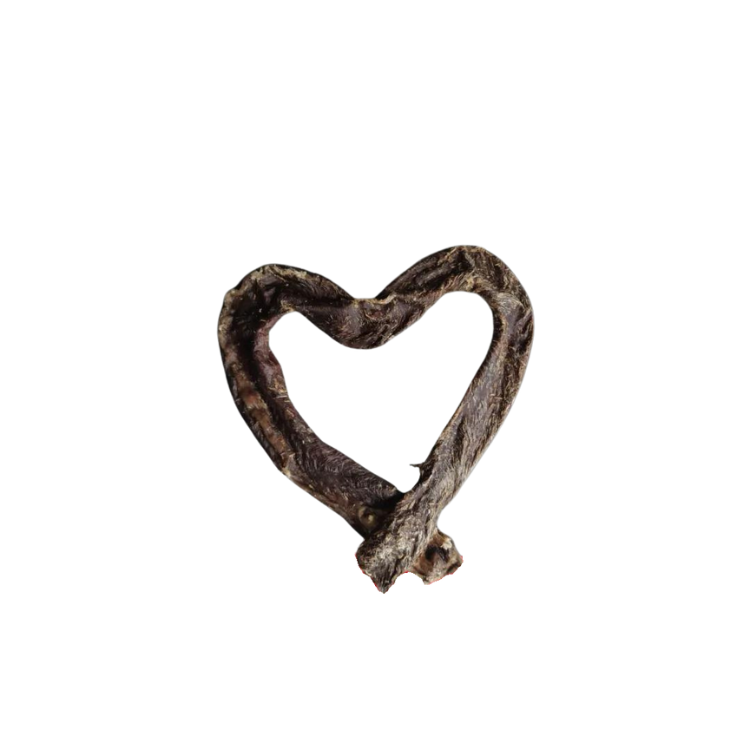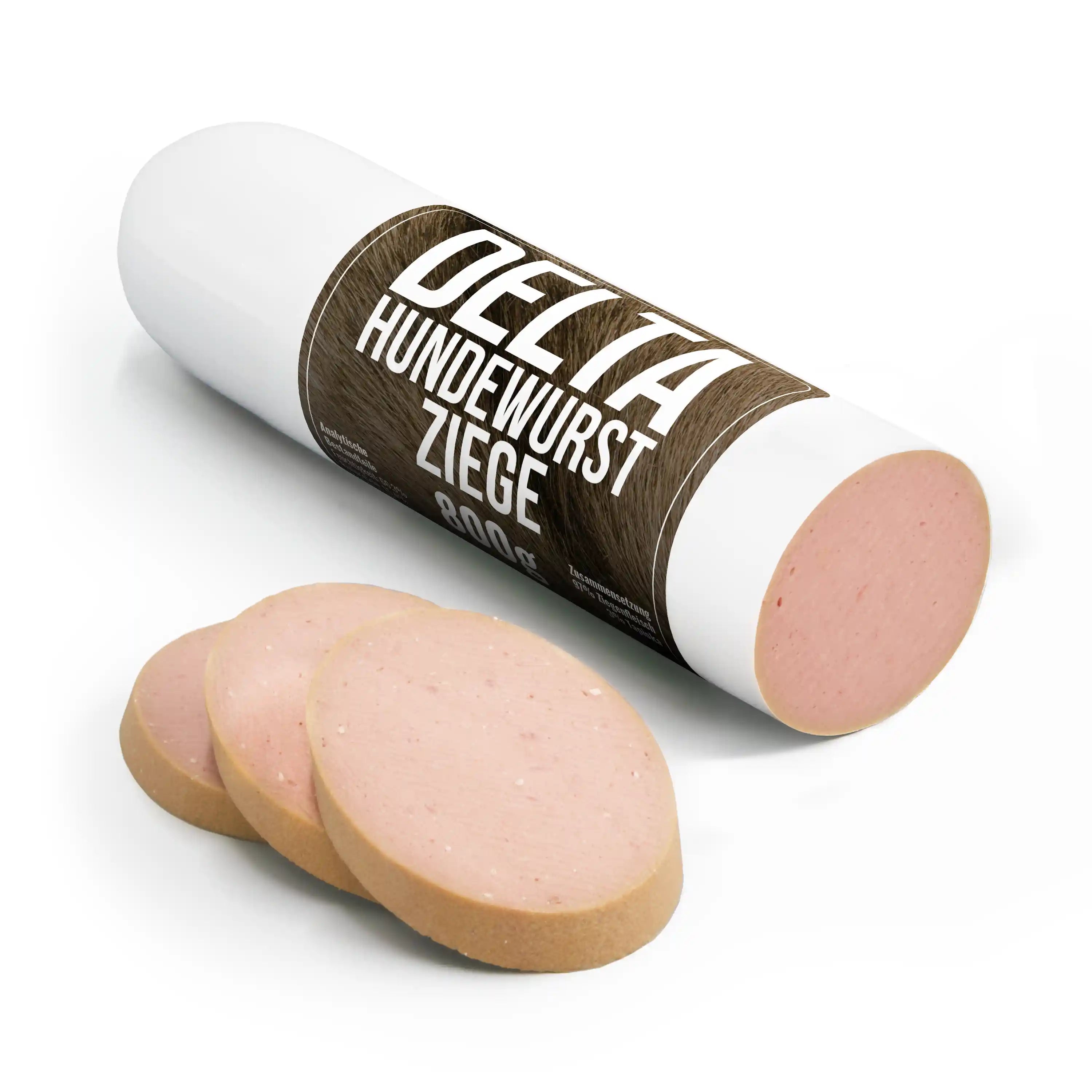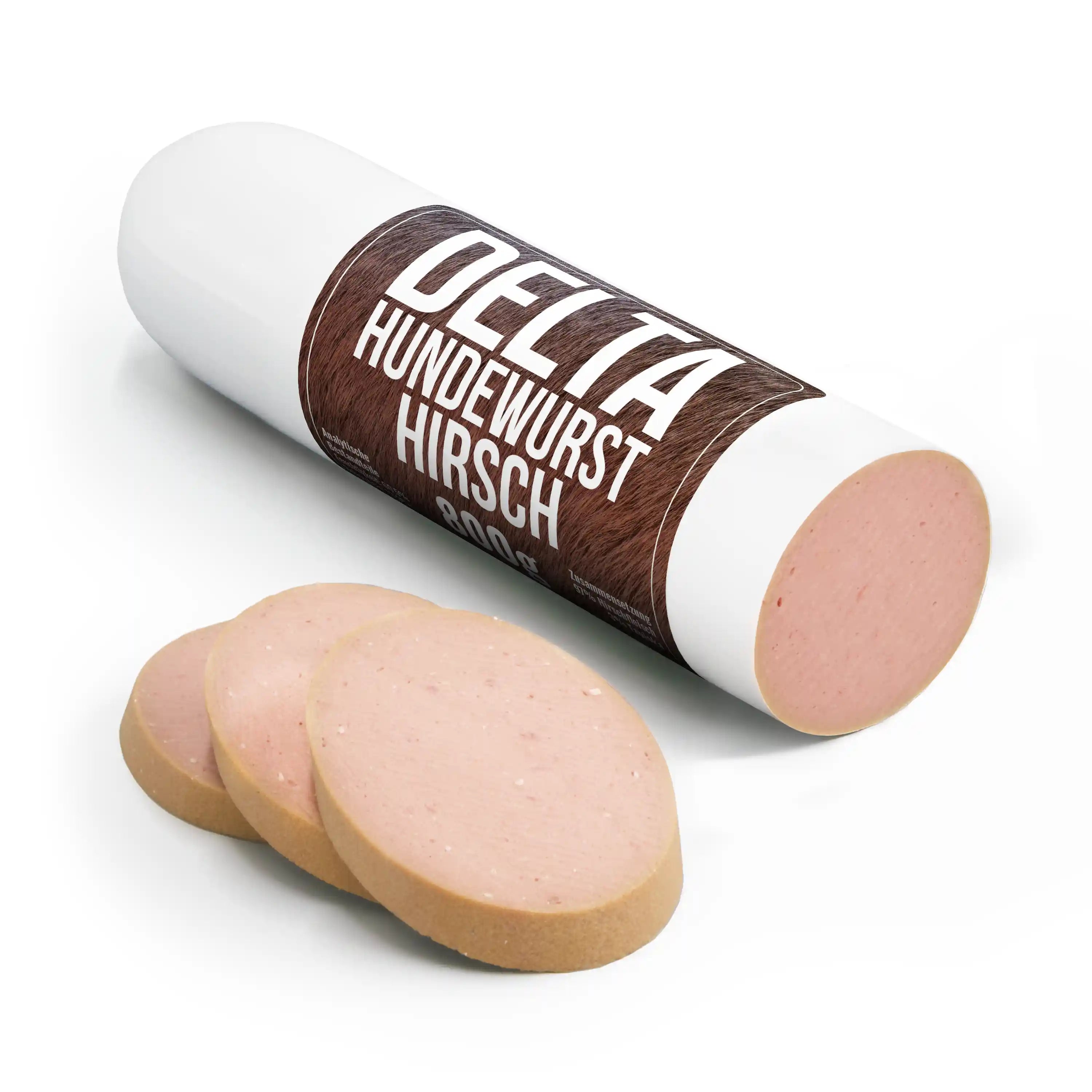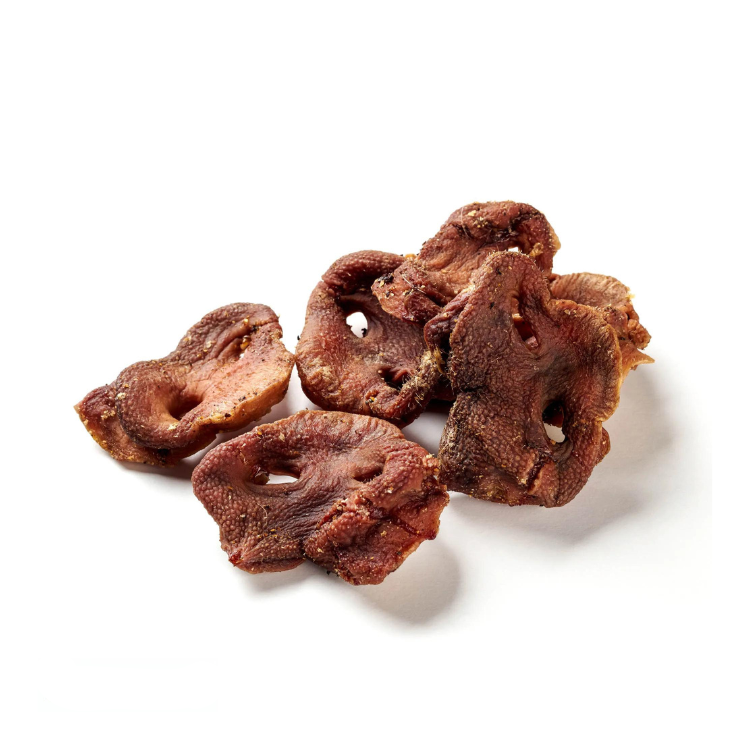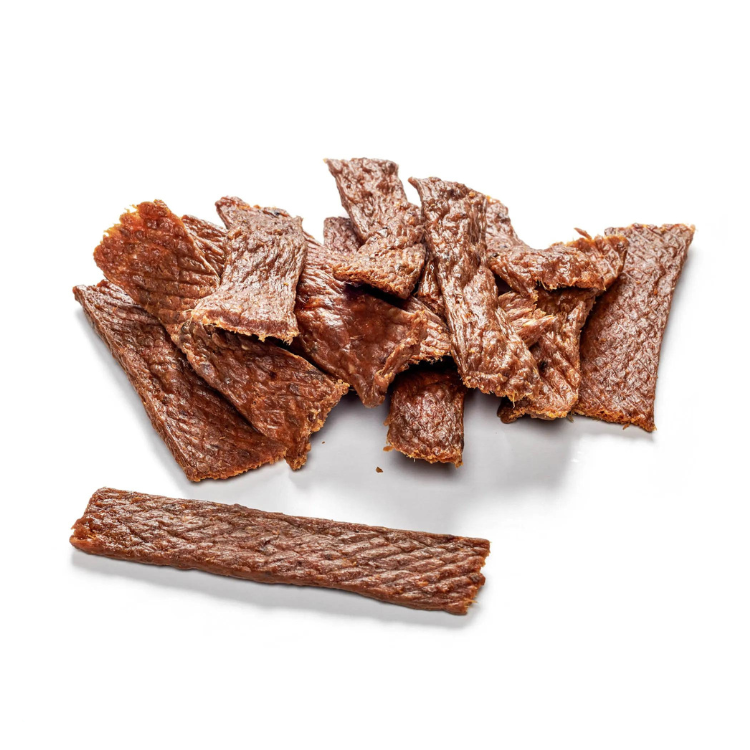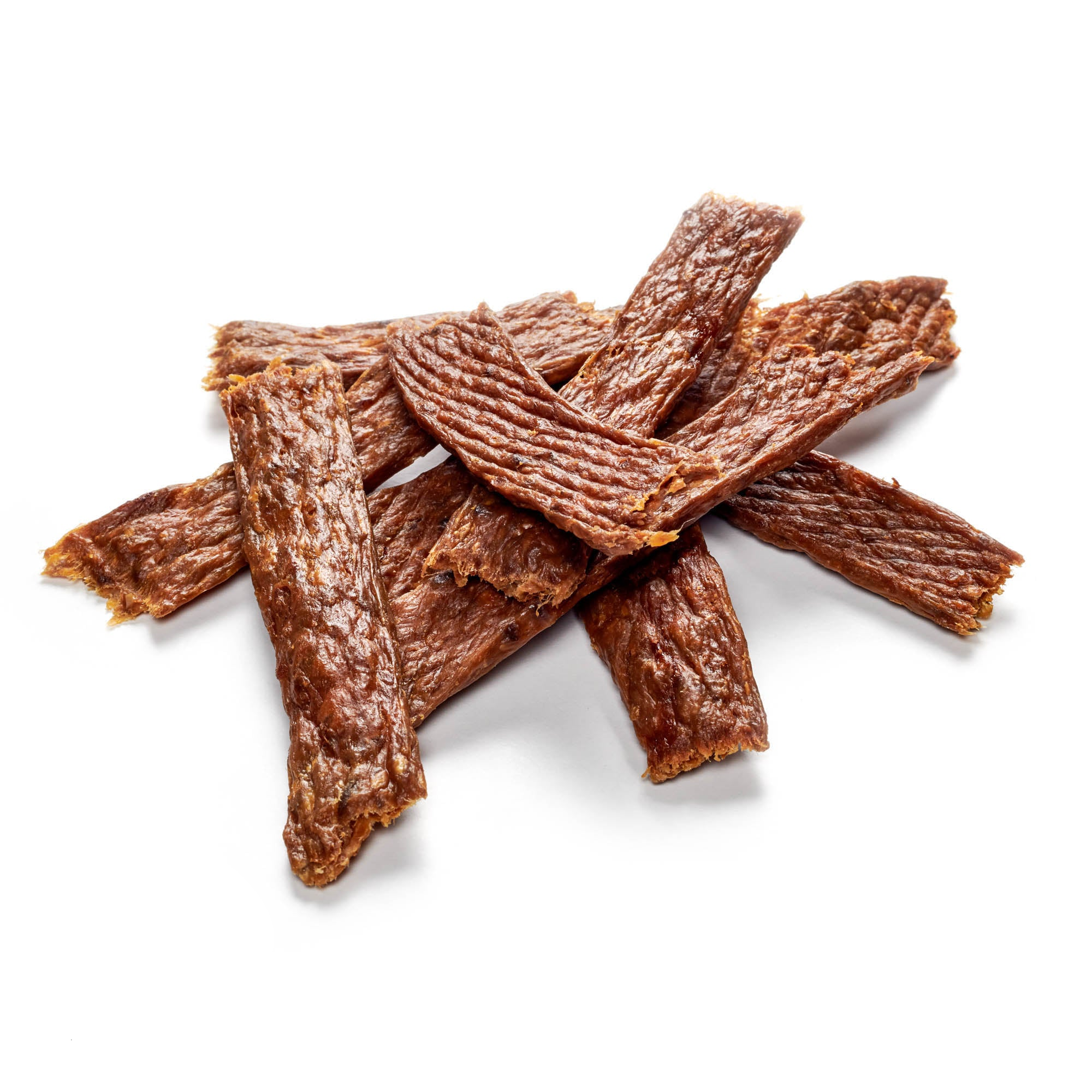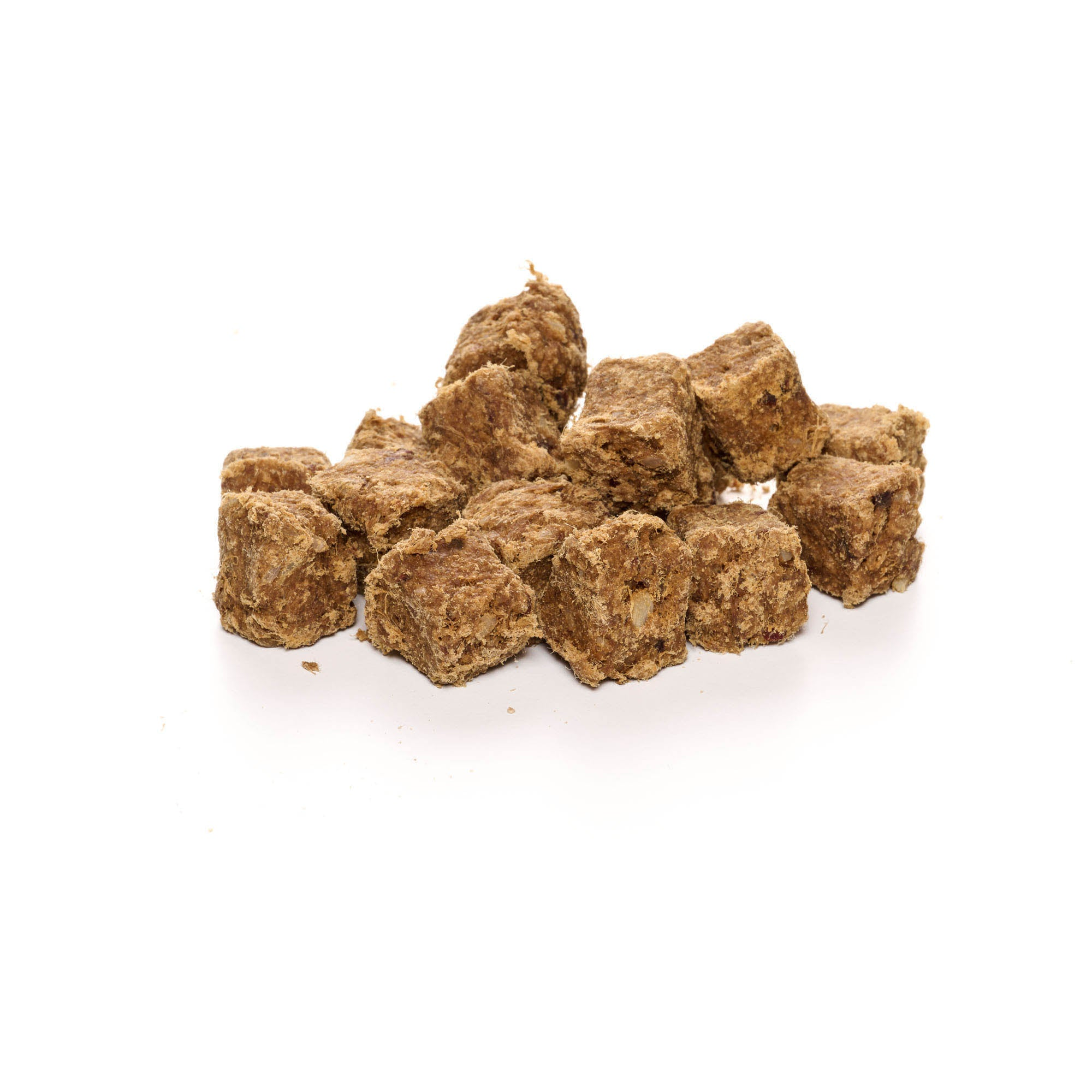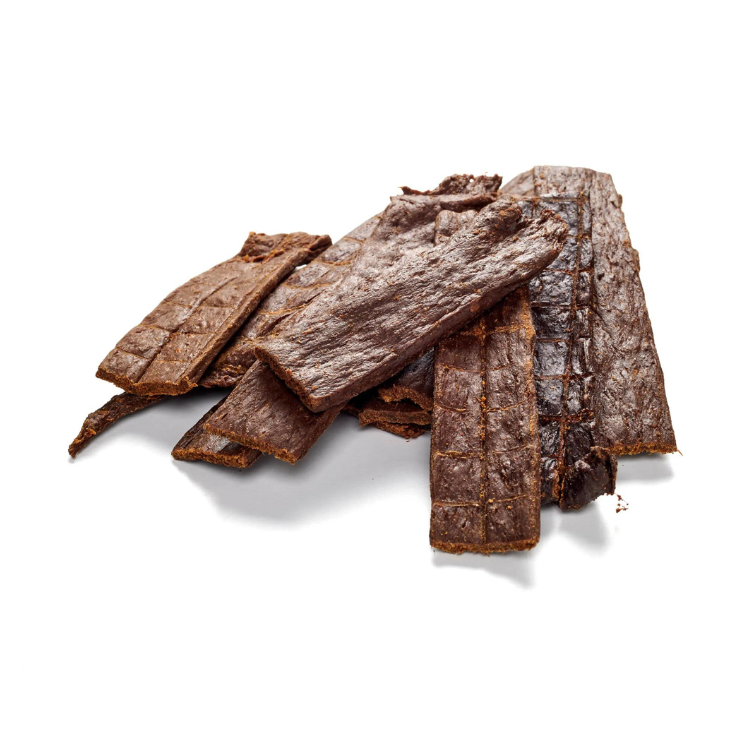
Pug
Share
The pug has accompanied the emperor of China - which dog can say that? The squishy face, compact body and panting breathing have helped the dog to worldwide fame. Its loving nature makes it absolutely suitable for families and everyday life. As Loriot once said: "A life without a pug is possible, but pointless."
Content: Pug
- profile
- Special features
- Nutrition
- Health and care
- Origin & History
- The right accessories
- Conclusion
Pamper your dog with our delicious chews!
Pug - Profile
- Character: Happy, bright, playful, fond of children, gentle
- Size: Small
- Height: 25-30 cm
- Weight: 6-10 kg
- Life expectancy: 13-15 years
- Coat type: Long hair
- Color: Beige, Black
- Special features: Sensitive to heat and physical exertion
- FCI Group: Companion and Toy Dogs
Pug - Special characteristics
The pug may look grumpy, but don't be fooled! The little one is a very charming creature with a cheerful and friendly character. The intelligent dog is a headstrong animal that can assert itself when necessary. With consistent training, however, this stubbornness can quickly be brought under control. The pug likes company and cannot stand being alone. It has no guarding or hunting instinct and has therefore been promoting itself as a family and companion dog for thousands of years.
The pug loves to play and can be just as cheerful as it can be lying on the sofa snoring. Its mood can change suddenly and the sleepy lap dog can become a "pug-happy" animal. The little guy also has the biggest heart in the dog world and proves himself to be a faithful and loyal companion time and time again. What is particularly pleasing is that barking or aggressive behavior is absolutely not part of the repertoire of this good-natured dog. On the contrary! In dangerous situations with other dogs, the pug also likes to underestimate its position and fail to recognize the danger.
Reward your dog with our high-quality chew products!
Pug - Health and Care
The care of this breed of dog is rather demanding. The coat is easy to care for. However, this does not make regular brushing unnecessary - the pug likes to shed. The face needs special attention. Due to the short snout and the strong skin folds, it must be kept clean and smooth. Special care products are available for the ears. In addition, the eyes and nose should be checked regularly. A balanced diet can also prevent obesity. As a rule, too much body fat cannot be compensated for by exercise.
Pugs often have problems with their respiratory system due to overbreeding. Today, attempts are being made to breed these little four-legged friends to have a longer nose. The eyes tend to have problems with the cornea and over the years, Pur-Dog encephalitis, an inflammatory disease of the nervous system, has become widespread. Make sure that you buy from a certified and reputable breeder and that you have proof of any health problems of the parents.
Pug - The right accessories
The pug is a playful dog with moderate energy. With a few dog treats, you can teach him a trick or two in no time. Small balls and games of skill are great fun for the little rascal. Since the pug tends to get cold, you should get him a winter coat in the winter months.
Pug - Origin & History
The origin of the pug has been the subject of much debate. What is certain is that it was widespread in China before Dutch traders brought it to Europe in the early 16th century. 2000 years ago, the rye-like dog kept the Emperor of China company, who had the privilege of owning this breed of dog. In Europe, the small, wrinkled dog was particularly popular with noble ladies and was allowed to call the salons of the rich and beautiful its home. Around 1900, the pug, after almost being forgotten, enjoyed renewed popularity. Through renewed breeding, it began its successful triumphal march around the globe, which continues to this day.
Pug -The right accessories
The right accessories are essential for a pug. A wide, soft collar or a well-fitting harness are ideal for walks to avoid pressure on the sensitive windpipe. A sturdy leash offers safety and control. An orthopedic dog bed supports its joints and ensures restful sleep. High-quality, customized food promotes health and prevents obesity . Toys made of robust material keep the pug active and occupied. Care products such as a soft brush and moisturizing dog shampoos are important for coat care. A sturdy drinking and feeding bowl set rounds off the basic equipment. These accessories contribute significantly to the health and happiness of your pug.
Conclusion
The pug, with its distinctive appearance and loving nature, has a long history as a companion to humans. Despite health vulnerabilities, it enjoys worldwide popularity as a loyal family dog. Care may be demanding, but its charming nature makes it an indispensable companion in everyday life.
Spoil your four-legged friend with our delicate chew items!

